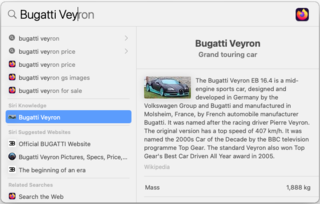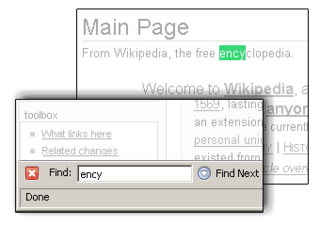Related Research Articles
AppleTalk is a discontinued proprietary suite of networking protocols developed by Apple Computer for their Macintosh computers. AppleTalk includes a number of features that allow local area networks to be connected with no prior setup or the need for a centralized router or server of any sort. Connected AppleTalk-equipped systems automatically assign addresses, update the distributed namespace, and configure any required inter-networking routing.
The Gopher protocol is a communication protocol designed for distributing, searching, and retrieving documents in Internet Protocol networks. The design of the Gopher protocol and user interface is menu-driven, and presented an alternative to the World Wide Web in its early stages, but ultimately fell into disfavor, yielding to HTTP. The Gopher ecosystem is often regarded as the effective predecessor of the World Wide Web.

The World Wide Web is an information system that enables content sharing over the Internet through user-friendly ways meant to appeal to users beyond IT specialists and hobbyists. It allows documents and other web resources to be accessed over the Internet according to specific rules of the Hypertext Transfer Protocol (HTTP).
Wide Area Information Server (WAIS) is a client–server text searching system that uses the ANSI Standard Z39.50 Information Retrieval Service Definition and Protocol Specifications for Library Applications" (Z39.50:1988) to search index databases on remote computers. It was developed in 1990 as a project of Thinking Machines, Apple Computer, Dow Jones, and KPMG Peat Marwick.
In computing, Open Database Connectivity (ODBC) is a standard application programming interface (API) for accessing database management systems (DBMS). The designers of ODBC aimed to make it independent of database systems and operating systems. An application written using ODBC can be ported to other platforms, both on the client and server side, with few changes to the data access code.
FileMaker is a cross-platform relational database application developed by Claris International, a subsidiary of Apple Inc. It integrates a database engine with a graphical user interface (GUI) and security features, allowing users to visually modify a database. Versions for desktops, servers, iOS and web-delivery have been released.
Btrieve is a transactional database software product. It is based on Indexed Sequential Access Method (ISAM), which is a way of storing data for fast retrieval. There have been several versions of the product for DOS, Linux, older versions of Microsoft Windows, 32-bit IBM OS/2 and for Novell NetWare.

Spotlight is a system-wide desktop search feature of Apple's macOS and iOS operating systems. Spotlight is a selection-based search system, which creates an index of all items and files on the system. It is designed to allow the user to quickly locate a wide variety of items on the computer, including documents, pictures, music, applications, and System Settings. In addition, specific words in documents and in web pages in a web browser's history or bookmarks can be searched. It also allows the user to narrow down searches with creation dates, modification dates, sizes, types and other attributes. Spotlight also offers quick access to definitions from the built-in New Oxford American Dictionary and to calculator functionality. There are also command-line tools to perform functions such as Spotlight searches.
Apple Open Collaboration Environment (AOCE) is a collection of messaging-related technologies introduced for the Classic Mac OS in the early 1990s. It includes the PowerTalk mail engine, which is the primary client-side interface to the system, the PowerShare mail server for workgroup installations, and a number of additional technologies such as Open Directory, encryption, and digital signature support.

Desktop search tools search within a user's own computer files as opposed to searching the Internet. These tools are designed to find information on the user's PC, including web browser history, e-mail archives, text documents, sound files, images, and video. A variety of desktop search programs are now available; see this list for examples. Most desktop search programs are standalone applications. Desktop search products are software alternatives to the search software included in the operating system, helping users sift through desktop files, emails, attachments, and more.

In computing, incremental search, also known as hot search, incremental find or real-time suggestions, is a user interface interaction method to progressively search for and filter through text. As the user types text, one or more possible matches for the text are found and immediately presented to the user. This immediate feedback often allows the user to stop short of typing the entire word or phrase they were looking for. The user may also choose a closely related option from the presented list.
The following tables compare general and technical information for a number of relational database management systems. Please see the individual products' articles for further information. Unless otherwise specified in footnotes, comparisons are based on the stable versions without any add-ons, extensions or external programs.
Data Access Language for the Macintosh, or simply DAL, was a SQL-like language and application programming interface released by Apple Computer in 1990 to provide unified client/server access to database management systems. It was known for poor performance and high costs, something Apple did little to address over its short lifetime, before it was sold off in 1994. DAL is used as the native SQL dialect of the PrimeBase SQL server, as well as the now-defunct Butler SQL.
The Data Access Manager (DAM) was a database access API for the classic Mac OS, introduced in 1991 as an extension to System 7. Similar in concept to ODBC, DAM saw little use and was eventually dropped in the late 1990s. Only a handful of products ever used it, although it was used for some extremely impressive demoware in the early 1990s. More modern versions of the classic Mac OS, and macOS, use ODBC for this role instead.
Inkwell, or simply Ink, is the name of the handwriting recognition technology developed by Apple Inc. and built into the Mac OS X operating system. Introduced in an update to Mac OS X v10.2 "Jaguar", Inkwell can translate English, French, and German writing. The technology made its debut as "Rosetta", an integral feature of Apple Newton OS, the operating system of the short-lived Apple Newton personal digital assistant. Inkwell's inclusion in Mac OS X led many to believe Apple would be using this technology in a new PDA or other portable tablet computer. None of the touchscreen iOS devices – iPhone/iPod/iPad – has offered Inkwell handwriting recognition. However in iPadOS 14 handwriting recognition has been introduced, as a feature called Scribble.

FirstClass is a client–server groupware, email, online conferencing, voice and fax services, and bulletin-board system for Windows, macOS, and Linux. FirstClass's primary markets are the higher-education and K-12 education sectors, including four of the top ten largest school districts in the United States.
In computing, a virtual folder generally denotes an organizing principle for files that is not dependent on location in a hierarchical directory tree. Instead, it consists of software that coalesces results from a data store, which may be a database or a custom index, and presents them visually in the format in which folder views are presented. A virtual folder can be thought of as a view that lists all files tagged with a certain tag, and thus a simulation of a folder whose dynamic contents can be assembled on the fly, when requested. It is related in concept to several other topics in computer science, with names including saved search, saved query, and filtering.
Microsoft SQL Server is a proprietary relational database management system developed by Microsoft. As a database server, it is a software product with the primary function of storing and retrieving data as requested by other software applications—which may run either on the same computer or on another computer across a network. Microsoft markets at least a dozen different editions of Microsoft SQL Server, aimed at different audiences and for workloads ranging from small single-machine applications to large Internet-facing applications with many concurrent users.

Yesod is a web framework based on the programming language Haskell for productive development of type-safe, representational state transfer (REST) model based, high performance web applications, developed by Michael Snoyman, et al. It is free and open-source software released under an MIT License.
References
- 1 2 "AppleSearch Product Details". Archived from the original on 2010-01-24. Retrieved 2006-08-10.
- ↑ Cantrall, Dan (1994). "From MARC to Mosaic: Progressing toward Data Interchangeability at the Oregon State Archives" (PDF). Archives and Museum Informatics. 8 (1): 11. doi:10.1007/BF02802044. ISSN 1042-1467 . Retrieved 2021-12-31.
Users will be able [0 query the server using Applesearch, a sophisticated full-text searching engine thal allows natural language querying and presents "hits" in order of relevancy.
- ↑ "RECAP AND WRAP-UP ON APPLE's SERVER, APPLESEARCH ANNOUNCEMENTS AT HANNOVER". Tech Monitor (Previously known as Computer Business Review). Tech Monitor. 1993-04-18. Retrieved 2021-12-31.
It supports natural language queries on text-based information, and it uses a relevance ranking algorithm to pick the information of most value to the user.
- ↑ AppleSearch.acgi
- ↑ "AppleSearch". infomotions.com. Retrieved 24 June 2015.
- ↑ The Virtual Community:Homesteading on the Electronic Frontier